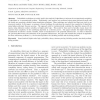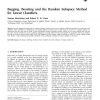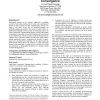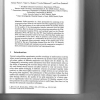187 search results - page 8 / 38 » Combining simulation and formal methods for system-level per... |
JCST
2010
13 years 2 months ago
2010
Probabilistic techniques are widely used in the analysis of algorithms to estimate the computational complexity of algorithms or a computational problem. Traditionally, such analys...
CODES
2010
IEEE
13 years 5 months ago
2010
IEEE
Synchronous Dataflow (SDF) is a powerful analysis tool for regular, cyclic, parallel task graphs. The behaviour of SDF graphs however is static and therefore not always able to ac...
PAA
2002
13 years 7 months ago
2002
: Recently bagging, boosting and the random subspace method have become popular combining techniques for improving weak classifiers. These techniques are designed for, and usually ...
ATAL
2009
Springer
14 years 2 months ago
2009
Springer
Multi-agent systems are an attractive approach to modeling systems of interacting entities, but in some cases mathematical models of these systems can offer complementary benefits...
IWINAC
2005
Springer
14 years 1 months ago
2005
Springer
spike separation is a basic prerequisite for analyzing of the cooperative neural behavior and neural code when registering extracelluIarly. Final performance of any spike sorting m...




